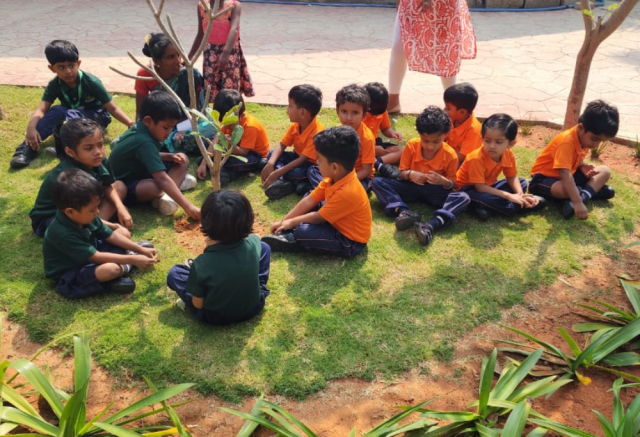Exciting Statistical Figures:
- Rainforests Cover Less Than 6% of Earth’s Land Surface but are home to more than half of the world’s wild plant, animal, and insect species.
- The Deep Sea is the Largest Habitat on Earth, covering 65% of the planet’s surface, yet more than 80% of this underwater world remains unexplored and unseen by human eyes.
- Coral Reefs Occupy Less Than 0.1% of the Ocean’s Area but support approximately 25% of all marine species, showcasing the incredible biodiversity and the dependency of species on specific habitats.
- Polar Bears Traverse Over 6000 Kilometers Each Year in the Arctic ice, indicating the vast range some animals require to find food and breeding sites within their habitats.
- Deserts, Occupying About One-Fifth of the Earth’s Land Surface, are not barren wastelands but rich ecosystems with species perfectly adapted to survive the harsh conditions.



Stunning Concepts Explored by TGSB Students:
1. Keystone Species and Their Impact: Students learn about the concept of keystone species, which have a disproportionately large impact on their environment relative to their abundance.
For example, the removal of a single keystone species, like the sea otter, can lead to dramatic shifts in ecosystem structure and biodiversity.
2. Habitat Fragmentation and Connectivity: TGSBians explore how human activities like urbanization and deforestation lead to habitat fragmentation, making it harder for species to find food, mates, and migrate.
They delve into solutions like wildlife corridors that reconnect fragmented habitats, ensuring species survival.
3. Biodiversity Hotspots and Conservation: Students are introduced to the concept of biodiversity hotspots — areas rich in biodiversity but threatened by human activities. They learn about global and local conservation efforts aimed at preserving these critical areas for future generations.
4. Ecosystem Services and Human Well-being: The curriculum covers the vital benefits that ecosystems provide to humans, such as clean water, air, pollination, and climate regulation. Students understand the intrinsic link between healthy habitats, animal well-being, and human prosperity.
5. Climate Change and Habitats: A significant part of learning involves understanding how climate change alters habitats and what this means for animal populations. Students examine case studies like the melting Arctic ice affecting polar bears and rising ocean temperatures leading to coral bleaching.
Through projects, field trips, and interactive lessons, TGSB students not only learn about these concepts but also engage in initiatives that contribute to habitat conservation and restoration. They come to understand the importance of each species and habitat in maintaining ecological balance, inspiring them to advocate for and work towards a sustainable future. This holistic approach to learning about animal habitats not only enriches students’ knowledge but also empowers them to become proactive compassionate environmental strategists.
Fo more visit

